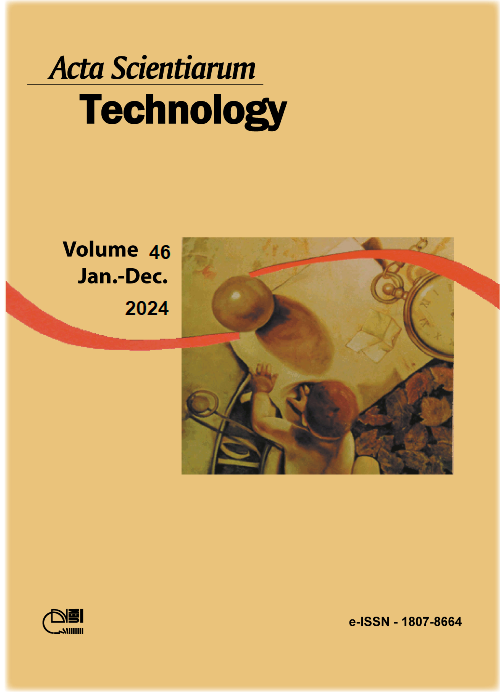Accumulation of ions in soil fertigated with dilutions of dairy effluents in the Brazilian semi-arid region
DOI:
https://doi.org/10.4025/actascitechnol.v46i1.63048Palavras-chave:
wastewater; agroindustry; soil quality; crop management.Resumo
Wastewater is an alternative water source with the potential to guarantee agricultural productivity in semi-arid regions, where quantitative and qualitative scarcity is a limiting factor. This study aimed to analyze the effects of the application of dairy effluent dilutions on the alterations of sodium, calcium, magnesium, and nitrogen contents along the profile of an Ultisol cultivated with Cereus hildmannianus in the semi-arid region of Brazil. The experimental design used was a 5 x 5 factorial randomized block design with five dilutions of dairy effluent (T1 - only well water (WW); T2 - 0.1 x annual loading rate according to EPA (1981) (LW) plus WW; T3 - 0.2 x LW plus WW; T4 - 0.3 x LW plus WW; and T5 - 0.4 x LW plus WW) and five depths (0 to 0.10 m; 0.10 to 0.20 m; 0.20 to 0.30 m; 0.30 to 0.40 m and 0.40 to 0.50 m), with five replicates. Cereus hildmannianus cultivation lasted 240 days, and after this period, soil samples were taken to determine the contents of sodium, calcium, magnesium, and nitrogen. Fertigation using dairy effluent with up to 40% of the annual loading rate in Ultisol poses no risk of water and soil contamination by nitrogen leaching. Fertigation using dairy effluent in proportions of up to 20% of the annual loading rate poses no risk of soil degradation due to excessive accumulation of ions.
Downloads
Downloads
Publicado
Como Citar
Edição
Seção
Licença
DECLARAÇíO DE ORIGINALIDADE E DIREITOS AUTORAIS
Declaro que o presente artigo é original, não tendo sido submetido í publicação em qualquer outro periódico nacional ou internacional, quer seja em parte ou em sua totalidade.
Os direitos autorais pertencem exclusivamente aos autores. Os direitos de licenciamento utilizados pelo periódico é a licença Creative Commons Attribution 4.0 (CC BY 4.0): são permitidos o compartilhamento (cópia e distribuição do material em qualqer meio ou formato) e adaptação (remix, transformação e criação de material a partir do conteúdo assim licenciado para quaisquer fins, inclusive comerciais.
Recomenda-se a leitura desse link para maiores informações sobre o tema: fornecimento de créditos e referências de forma correta, entre outros detalhes cruciais para uso adequado do material licenciado.



















